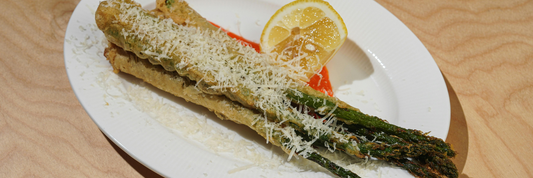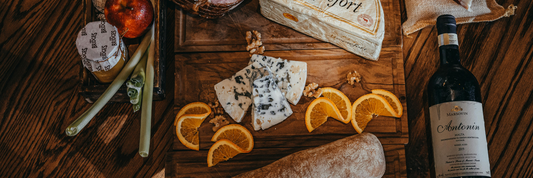In today’s fast-paced food industry, packaging isn’t just a protective shell it’s a powerful tool for safety, efficiency, and sustainability. Whether you're a food manufacturer, restaurant owner, or supply chain professional, understanding the food packaging process is crucial. Dive in to explore how every detail shapes product quality and brand success.
Definition and Importance of the Food Packaging Process
The food packaging process encompasses the methods and technologies used to enclose food products in protective materials to ensure safety, extend shelf life, and enhance brand presentation. Effective packaging is critical not only for preserving food quality and preventing contamination but also for improving production efficiency and influencing consumer perception. Packaging acts as a barrier against environmental factors such as moisture, air, and microbes, which can spoil food, while also facilitating transportation and storage logistics.
KimEcopak.ca, a leading eco-friendly food packaging supplier in Canada, exemplifies innovation in this field by offering sustainable packaging solutions made from natural materials. Their products, including take-out containers, paper boxes, and cups, are designed for quick biodegradation and user safety, supporting the growing demand for environmentally responsible packaging in the food industry.

Equipment Selection vs Integration
Levels of Packaging
Food packaging is typically categorized into three levels:
- Primary packaging: The material in direct contact with the food, such as pouches, trays, or bottles.
- Secondary packaging: The outer layer that groups primary packages together, like cartons or shrink wraps.
- Tertiary packaging: Bulk packaging used for shipping and handling, such as pallets and crates.
Each level serves distinct functions, from protecting the product to facilitating handling and distribution.
Product Characteristics Affecting Equipment Choice
Selecting the right packaging equipment depends heavily on the product’s physical and chemical properties:
- Viscosity and flowability: Liquid or semi-liquid foods require different filling systems compared to powders or solids.
- Thermal sensitivity: Heat-sensitive products need packaging methods that avoid high temperatures.
- Material compatibility: Packaging materials must not react with the food to prevent contamination or spoilage.
Ensuring compatibility between the product and packaging materials is essential to maintain product integrity and safety.
Filling and Sealing Technologies

Various filling methods are employed depending on the product type:
- Auger filling for powders.
- Flow filling for liquids.
- Vacuum filling for products requiring air removal.
- Vertical Form Fill Seal (VFFS) machines for flexible packaging.
Sealing technologies are equally diverse and crucial for food preservation:
- Heat sealing is widely used for creating airtight seals in pouches and films.
- Vacuum sealing extends shelf life by removing air.
- Ultrasonic sealing offers precise, low-heat sealing ideal for heat-sensitive materials.
- Induction sealing provides tamper-evident seals for bottles and jars.
Additional equipment such as cappers, checkweighers, and autocoders ensure package integrity, correct filling, and traceability.
End of Line Equipment vs Multi Vendor Strategy
End of line equipment includes checkweighers for weight verification, coders for batch and date marking, and palletizers for stacking products for shipment. Employing a multi-vendor strategy allows manufacturers to select the best equipment for each packaging stage, optimizing flexibility and cost efficiency while ensuring seamless integration across the production line.
Packaging Material Handling vs Factory Acceptance Testing (FAT)
Efficient handling systems like conveyors and packaging hoppers streamline material flow within the factory. Factory Acceptance Testing (FAT) is a critical step where packaging machinery is tested under simulated production conditions before installation. FAT ensures the equipment meets performance specifications, reduces post-installation issues, and minimizes downtime, ultimately safeguarding production continuity.

Throughput vs Performance Planning
Optimizing throughput in food packaging involves careful planning of line speed and throughput rates. Calculations must consider cycle times and identify bottlenecks that limit production capacity. Bottlenecks can shift within the value chain, such as from production to packaging areas, requiring holistic analysis beyond just the packaging line machinery.
Using simulation tools and cycle time analysis helps manufacturers optimize processes, reduce downtime, and improve overall equipment effectiveness (OEE). Minimizing changeover times, especially for packaging materials like film rolls, is vital for maintaining high throughput and reducing costly production losses. Engaging operators in performance measurement fosters a culture of continuous improvement, essential for agility and competitiveness in the food packaging industry.
This comprehensive overview of the food packaging process highlights the critical stages from equipment selection and integration to throughput optimization. Suppliers like KimEcopak.ca demonstrate the growing importance of sustainable, eco-friendly packaging solutions that meet both environmental and operational demands in Canada’s food sector.
Sanitation vs Maintenance
Comprehensive Sanitation Strategy
Implementing effective cleaning protocols such as dry cleaning, washdown procedures, and Clean-In-Place (CIP) systems to maintain hygiene without disrupting production.
Equipment Material and Hygienic Design
Utilizing 304 stainless steel and other food-grade materials designed to minimize contamination risks and facilitate easy cleaning.
Compliance with Food Safety Standards
Adhering to critical regulations and guidelines including HACCP (Hazard Analysis and Critical Control Points), GMP (Good Manufacturing Practices), and FSMA (Food Safety Modernization Act) to ensure product safety and regulatory compliance.
Flexibility vs SKU Changeover
Fast Changeovers with Tool-less Design
Designing equipment for quick and easy changeovers without the need for specialized tools, reducing downtime.
Multi Product Line Setup
Enabling production lines to handle multiple SKUs efficiently, allowing manufacturers to respond rapidly to market demands and seasonal variations.

Automation vs Smart Technologies
Developing an Automation Roadmap
Incorporating robotics, Automated Guided Vehicles (AGVs), and advanced PLC/SCADA control systems to streamline operations and improve precision.
Remote Monitoring and Digital Tools
Leveraging technologies such as digital twins and smart glasses for real-time monitoring, predictive maintenance, and operator training.
Ensuring Fill Accuracy and Operator Safety
Using automated sensors and safety interlocks to maintain consistent fill levels and protect workers.
Cost vs Investment Planning
Capital Expenditure (CAPEX) vs Operating Expenses (OPEX)
Balancing upfront investment costs with ongoing operational expenses to optimize budget allocation.
ROI Calculation and Long Term Planning
Evaluating return on investment to make informed decisions that support sustainable growth.
Vendor Neutral Recommendations
Providing unbiased advice to select the best equipment and suppliers based on performance and cost-effectiveness.
Line Layout vs Space Optimization
Footprint Optimization and Line Balancing
Designing compact, efficient production lines that maximize throughput while minimizing space.
Packaging Room Layout
Planning for smooth raw material flow, optimal workforce positioning, and efficient finished goods handling.
Utility Access
Ensuring adequate supply of air, water, electricity, and HVAC systems to support uninterrupted operations.
Food Safety vs Regulatory Compliance

Safe Food-Contact Packaging Materials
Selecting materials that meet safety standards and do not compromise food quality.
Advanced Packaging Methods
Utilizing vacuum sealing, Modified Atmosphere Packaging (MAP), and other technologies to extend product shelf life.
Labeling and Traceability
Complying with regulations on allergens, nutritional information, and traceability to maintain transparency and consumer trust.
Future Trends vs Sustainability
Eco-Friendly Packaging Materials
Embracing compostable, recyclable, and low-plastic options to reduce environmental impact.
Nature-Based Packaging
Incorporating bamboo, kraft paper, and FSC certified materials as sustainable alternatives.
Automation and Digital Traceability
Advancing inspection processes and circular packaging systems through automation and blockchain-enabled traceability.
For innovative, eco-friendly food packaging solutions and expert integration support, contact KimEcopak.ca - Canada’s trusted supplier dedicated to providing sustainable packaging options tailored to your unique production needs. Partner with KimEcopak to elevate your packaging process with cutting-edge technology, reliable service, and a commitment to a greener future. Reach out today to discover how we can help transform your food packaging operations for maximum safety, efficiency, and sustainability.




